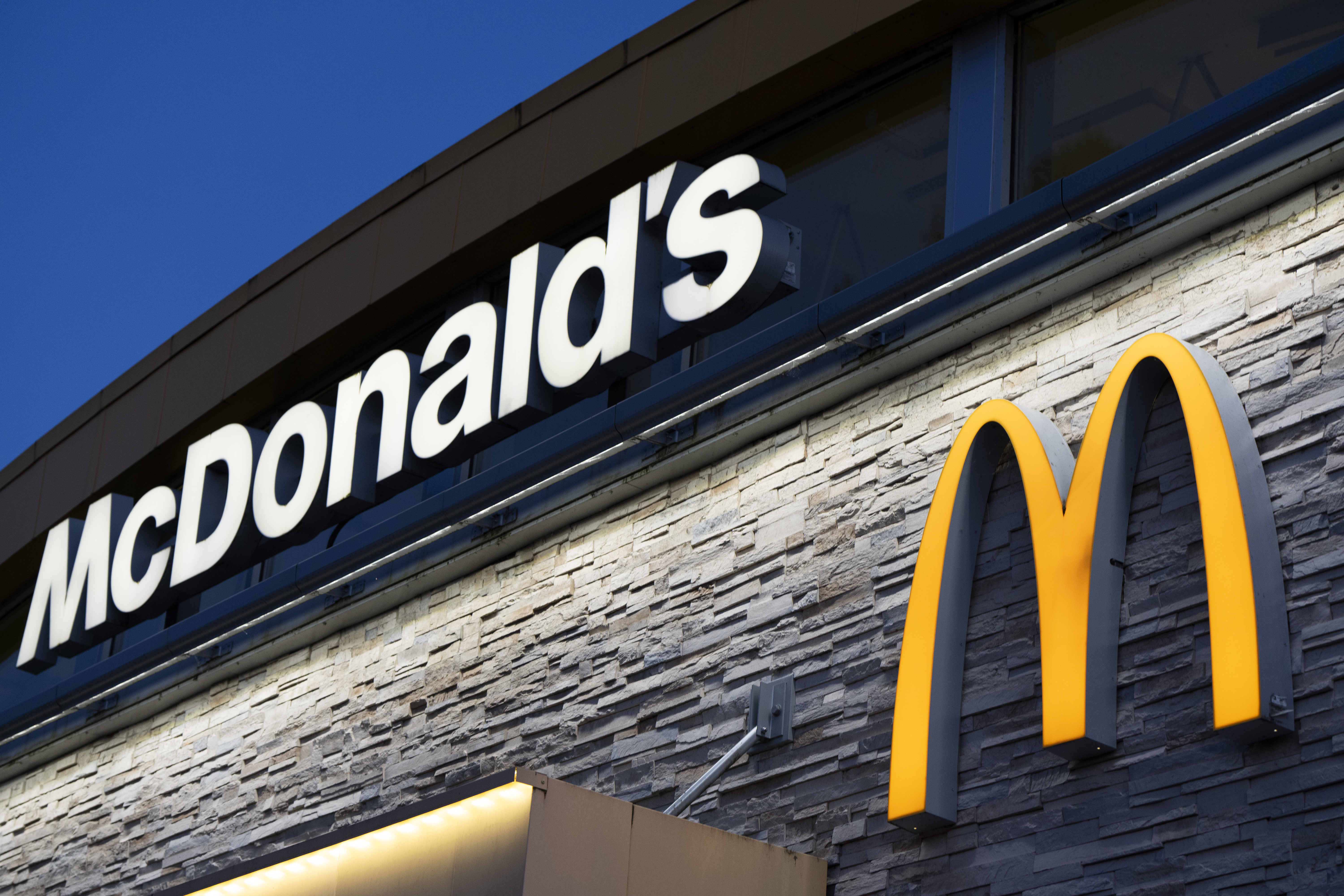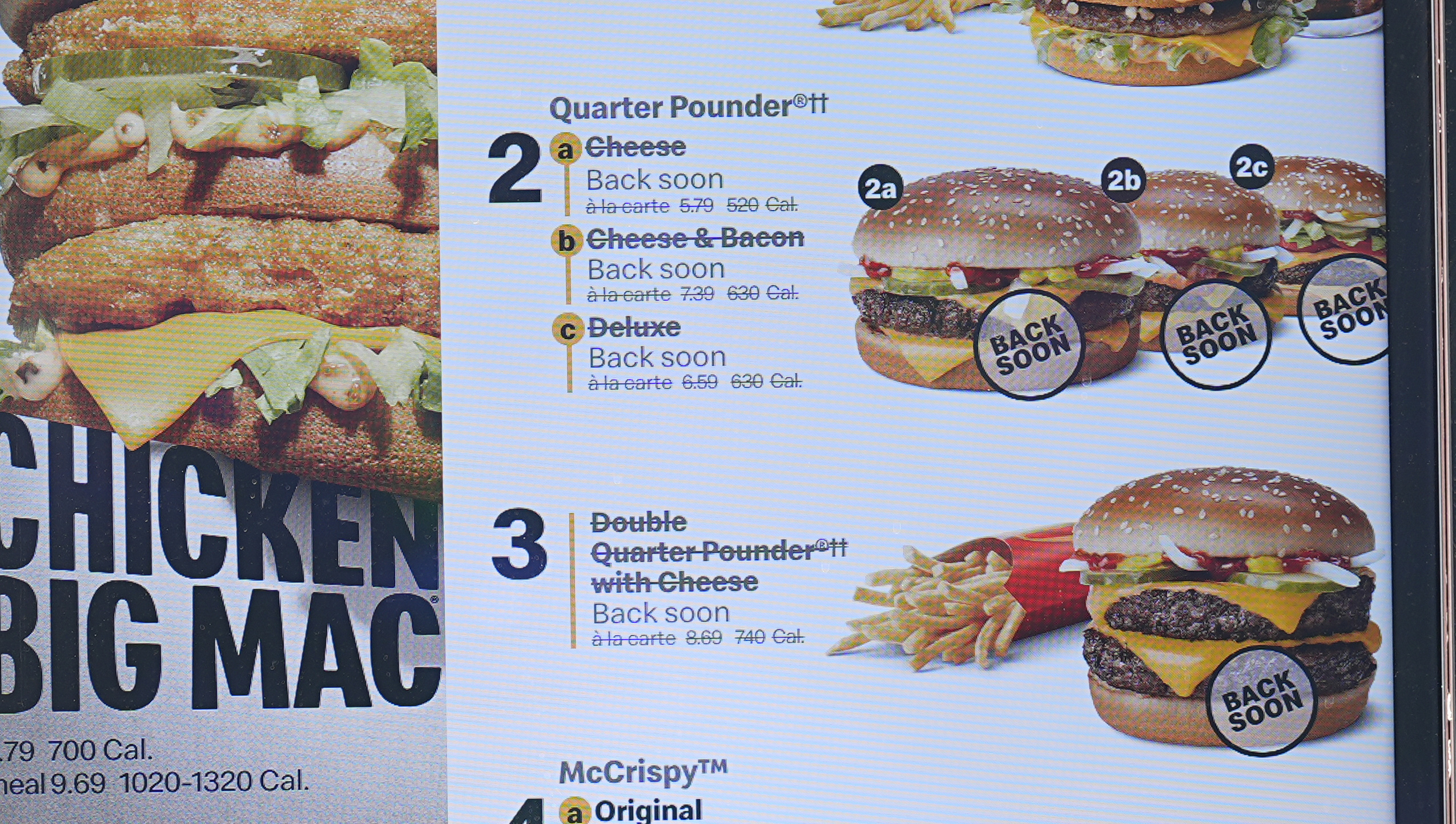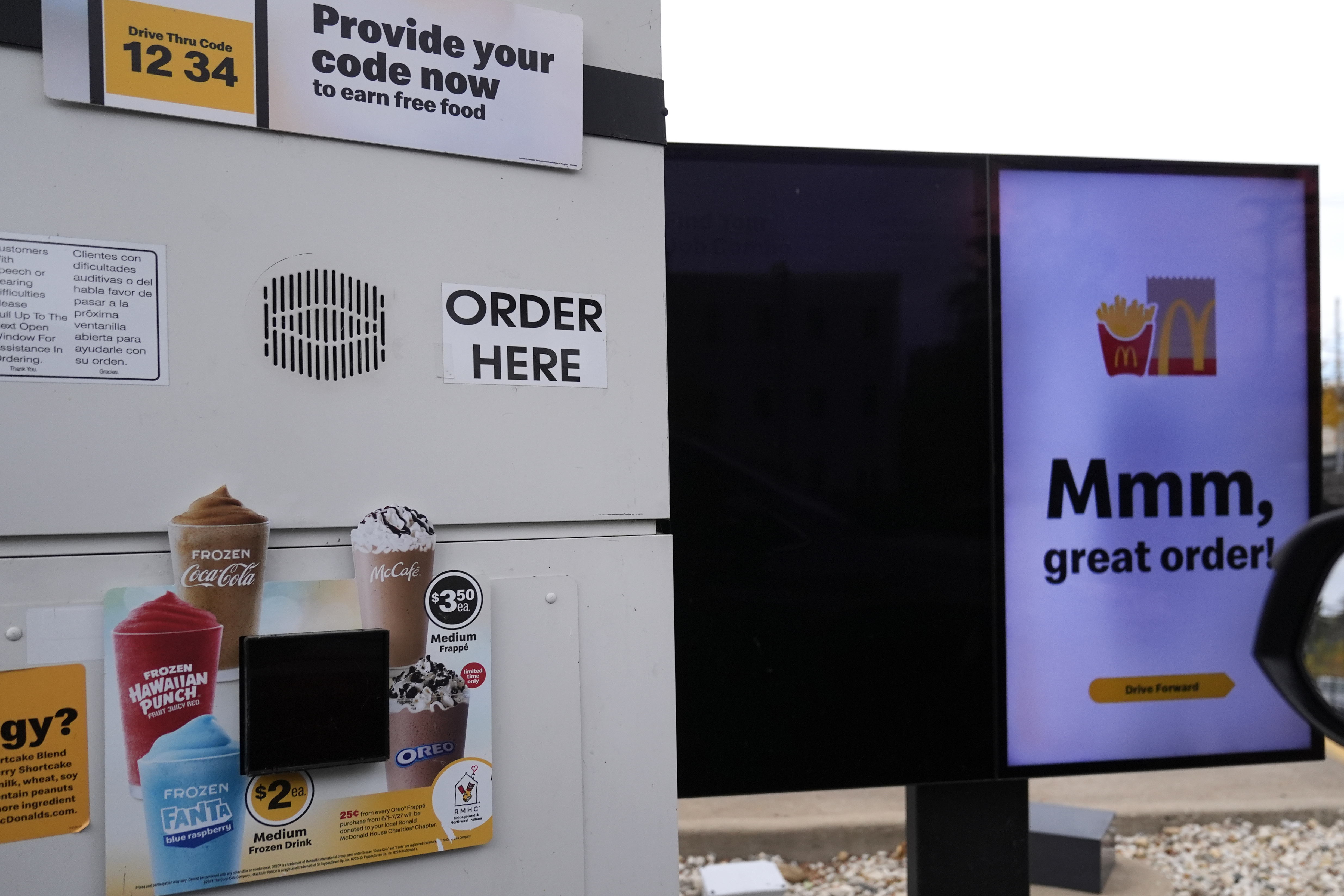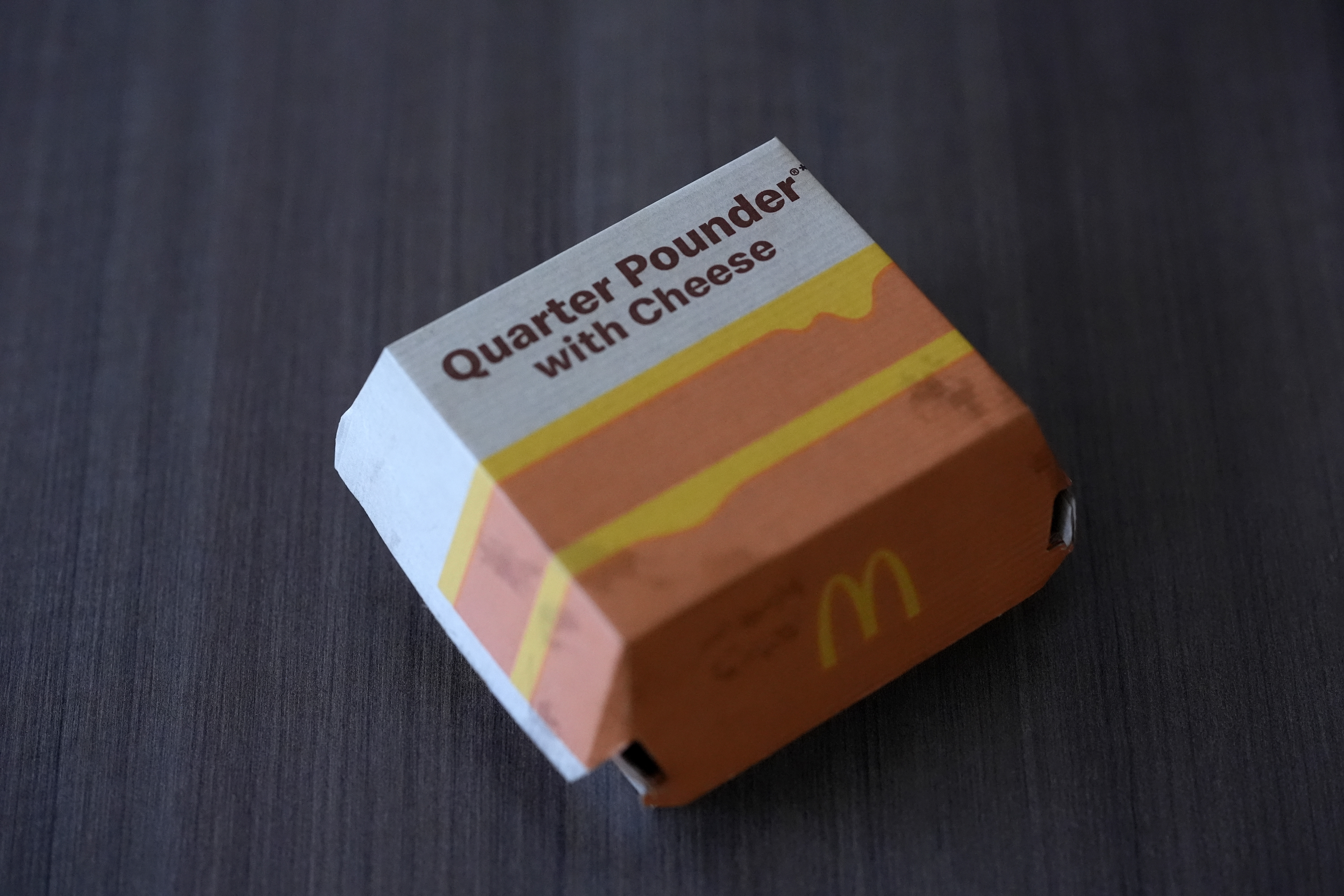McDonald's worked Wednesday to reassure customers that its U.S. restaurants are safe as federal investigators tried to pinpoint the cause of a deadly E. coli outbreak linked to fast-food giant's Quarter Pounder hamburgers.
McDonald's pulled Quarter Pounders from one-fifth of its U.S. stores Tuesday as a result of the outbreak, which the U.S. Centers for Disease Control and Prevention said had sickened at least 49 people in 10 states. One person died and 10 were hospitalized, according to the CDC.
A preliminary investigation by the U.S. Food and Drug Administration suggested fresh slivered onions that are served raw on Quarter Pounder hamburgers were a likely source of the contamination.
McDonald's said it was searching for a new regional supplier for fresh onions. In the meantime, Quarter Pounders were removed from menus in the impacted states as well as portions of other states.
McDonald's said it has worked closely with federal food safety regulators since late last week, when it was alerted to the potential outbreak. The company said the scope of the problem and the popularity of its products have complicated efforts to identify the contamination source.
McDonald's has more than 14,000 U.S. stores and serves 1 million Quarter Pounders every two weeks in the affected area.
McDonald's is known for its stringent food safety guidelines and protocols, said Chris Gaulke, a professor of food and beverage management at Cornell University's Nolan School of Hotel Administration. The company said Wednesday that the supplier regularly tested its onions for E. coli, for example.
"Given the volume of food that they go through, how infrequently this happens to McDonald's is a testament to the effort that they take," Gaulke said.
But some experts questioned why McDonald's simply stopped selling one sandwich and didn't close restaurants for further investigation.
"Good practice would have been to close all the restaurants," Bill Marler, a Seattle lawyer who specializes in food safety cases, said. "Until we know definitively what the product was that made people sick, consumers should be aware."
Marler said cross-contamination remains a potential possibility at the affected restaurants until they are thoroughly cleaned.
Asked why it didn't close any stores, McDonald's said nothing in the government's investigation indicated there were issues with its food preparation practices. In an interview on the "Today" show Wednesday, McDonald's U.S. President Joe Erlinger also said it's likely that whatever product was contaminated has already passed through the company's supply chain.
The Centers for Disease Control and Prevention reported the outbreak late Tuesday. It said infections were reported between Sept. 27 and Oct. 11 in Colorado, Iowa, Kansas, Missouri, Montana, Nebraska, Oregon, Utah, Wisconsin and Wyoming.
State and local public health officials were interviewing people about the foods they ate in the week before they got sick. Of the 18 people interviewed as of Tuesday, all reported eating at McDonald's, and 16 people reported eating a beef hamburger. Twelve reported eating a Quarter Pounder.
McDonald's said it's unlikely the beef in the Quarter Pounder was the source, since it comes from multiple suppliers and is cooked at a high enough temperature to kill E. coli.
McDonald's said its initial findings suggest that some of the reported illnesses were linked to onions from a single supplier, which the company didn't name. McDonald's said the onions are cleaned and sliced by the supplier and then packaged for use on individual Quarter Pounders.
The incubation period for E. coli is only a couple of days, so illness would be quickly apparent to anyone affected, said Donald Schaffner, a food safety expert at Rutgers University. "If you ate these burgers in September and now it's the middle of October and you didn't get sick, you're probably OK," he said.
E. coli bacteria are harbored in the guts of animals and found in the environment. Infections can cause severe illness, including fever, stomach cramps and bloody diarrhea. People who develop symptoms of E. coli poisoning should seek health care immediately and tell the provider what they ate.
The type of bacteria implicated in the McDonald's food causes about 74,000 infections in the U.S. annually, leading to more than 2,000 hospitalizations and 61 deaths each year, according to the CDC. In general, E. coli infections were lower in 2023 than in recent years and cases of severe kidney injury caused by the bacteria remained stable, according to latest federal data.
Outbreaks at restaurant chains are rare, but they do happen.
In 2020, Chipotle agreed to pay a record $25 million fine to resolve criminal charges that it served tainted food that sickened more than 1,100 people with E. coli between 2015 and 2018. In that case, poor safety practices, such as not keeping food at proper temperatures to prevent pathogen growth, were to blame.
In 2006, Taco Bell ordered the removal of green onions from its restaurants nationwide after samples taken by investigators appeared to contain a harsh strain of E. coli. The outbreak sickened at least 71 people.
"The worst thing you can have at a restaurant is a food safety problem. It's the equivalent of an airline losing the plane," said Aaron Allen, a restaurant consultant and founder of Aaron Allen and Associates.
But Allen said McDonald's has enough experience and safety protocols in place that it won't suffer long-term damage from the outbreak.
"No one would be better equipped to mitigate and respond to this than McDonald's," he said.
McDonald's shares fell 4.7% in late trading Wednesday.
------
AP Health Writer JoNel Aleccia contributed from Temecula, California.




